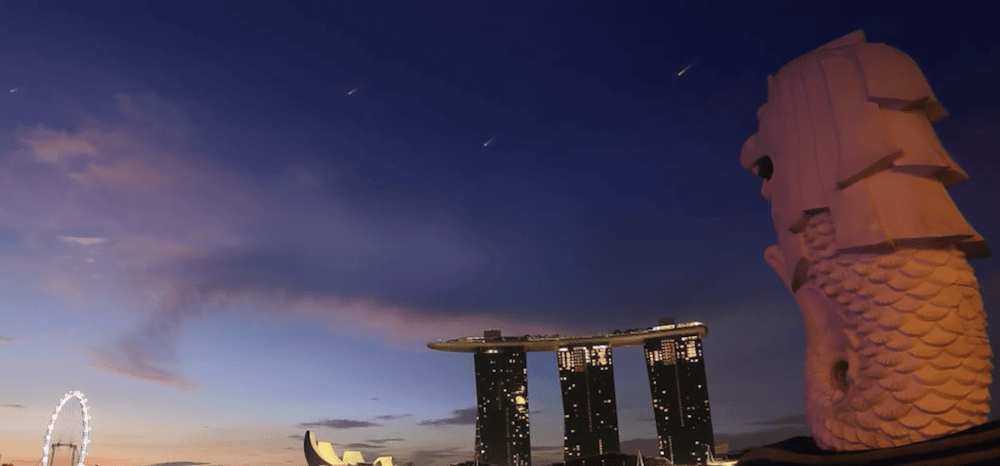
[Image above] Astro Live Experience, a Japanese company, plans to put on the first artificial meteor shower over Hiroshima in spring 2020. Credit: ALE_Astro Live Experiences, Vimeo
You are ready. The time has come to propose marriage to your significant other, and you are double checking your to-do list. Wine? Check. Ring? Check. Meteor shower that will streak across the sky just as you drop down onto one knee?
Timing your significant event to coincide with a meteor shower currently requires you to consult a meteor shower schedule—but you may be able to plan a meteor shower to suit your schedule in the near future if the ambitions of Astro Live Experiences (ALE) come to fruition.
ALE is the brainchild of CEO Lena Okajima, a “serial entrepreneur [who] founded two companies in the past in the mobile gaming and consulting industries,” according to the ALE website. In an interview with BBC, Okajima explains she first had the idea to artificially create a meteor shower while watching the natural Leonid meteor shower in 2001. However, it wasn’t until the economic crash of 2008 that she decided to quit her job at a financial company and pursue artificial meteor creation.
“[Natural] meteor showers occurred from very small particles from outer space so we thought we could recreate the same situation using little satellites,” Okajima says in the BBC interview. Her company plans to load microsatellites with 400 pellets each and launch them into an altitude low enough that any left-over debris will not threaten most satellites. Once in orbit, the microsatellites will release the pellets and generate a light show lasting between three to 10 seconds.
This month, Okajima and her colleagues made an important step toward becoming the first “space entertainment” company. On the morning of January 18 in Japan (night of January 17 in the United States) ALE blasted a rocket carrying seven microsatellites to a height of 500 km (310 miles) above the planet. Over the course of this next year, the satellites will gradually descend to a height of 400 km (249 miles). Once that occurs in spring 2020, ALE will put on the first artificial meteor shower over Hiroshima.
Check out the rocket launch that just happened!

Credit: CGTN, YouTube
While the idea of meteor showers on demand sounds pretty cool, some scientists are understandably worried about how ALE’s meteors might affect the environment. Space junk has become a big problem in recent years, and minimizing further junk growth is important.
The ALE website, though, is noticeably silent on the exact composition of their pellets. Reportedly, their meteor “is made of the same material as the space dust that rains onto Earth on a daily basis.”
Even though specifics are lacking, Adrien Lemal, an aerothermodynamics engineer and one of Okajima’s colleague’s, explains in the BBC article that the material was specifically chosen to make their meteors shine more brightly than natural ones.
While we will have to wait another year to see the actual artificial meteor shower take place, ALE released a promotional video demonstrating what their meteor showers could look like.
Credit: ALE_Astro Live Experiences, Vimeo
Author
Lisa McDonald
Related Posts
Other materials stories that may be of interest for December 17, 2025
December 17, 2025
Celebrating the US Semiquincentennial: Ohio Creativity Trail
December 16, 2025


